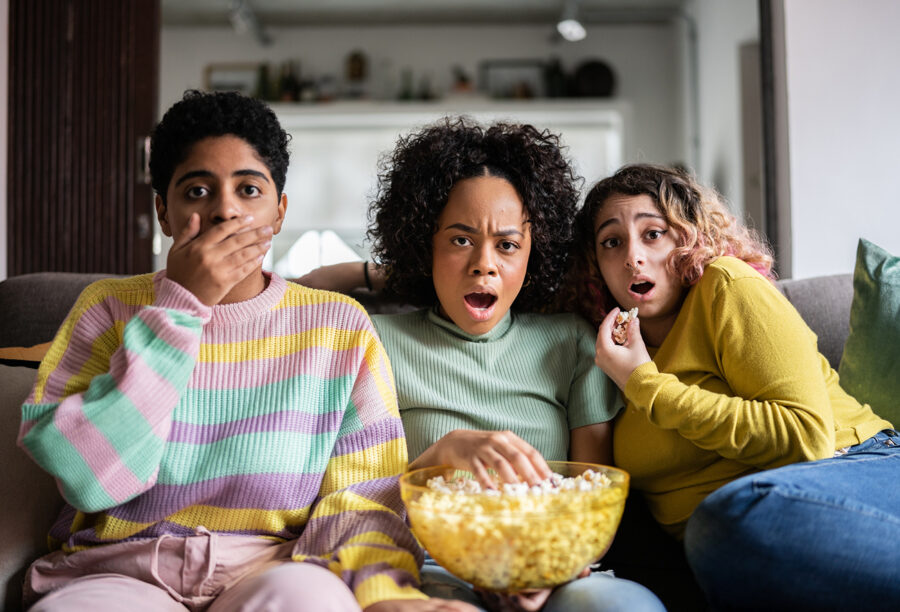We can agree that some things are universally bad. “Sharknado” movies. Dad jokes. The song “Macarena.”
Yet we can’t seem to get enough. At the height of “Sharknado” fever, there were 5,000 tweets per minute about the franchise. The popularity of dad jokes prompted Merriam-Webster to add the term to the dictionary in 2019. And “Macarena” is still ubiquitous at weddings more than 30 years after its release.
Some stuff is just so bad, it’s good. Why we love it is the contradiction that Wharton marketing professor Patti Williams pulls apart in her latest paper, “So Bad it’s Good: When and Why Consumers Prefer Bad Options.” The study was co-authored by former Wharton doctoral students Evan Weingarten, now a marketing professor at Arizona State University’s W. P. Carey School of Business, and Amit Bhattacharjee, marketing professor at the University of Colorado Boulder’s Leeds School of Business.
Inspired by a conversation about the movie “The Room,” which is considered one of the worst of all time, and the notoriously bad music video for “Friday” by Rebecca Black, the scholars decided to test whether consumers deliberately choose bad options although better ones are available, and why.
“Sometimes it can be a distraction that comes without a lot of baggage.”— Patti Williams
Sometimes, the Worst Choice Is the Easiest
Across 12 experiments using different forms of entertainment, they found that participants had a predilection for badness. When given a high-quality, medium-quality, and low-quality entertainment option, they often chose the latter expecting it to be bad.
“If we give them a set of five or six jokes and they vary in quality, a lot of people will pick the worst joke in the set over one of the mediocre jokes,” Williams said on the Wharton Business Daily show. (Listen to the podcast.) “From an economist’s perspective, that shouldn’t happen. Our choices should reflect our preferences about quality, and we should want to choose things that are better than those that are worse.”
But stuff that is so bad it’s good creates its own kind of quality through social and cultural currency, Williams explained. Consumers want to be part of the viral trend and in on the joke. They want to point and laugh along with everyone else about cringeworthy contestants on “So You Think You Can Dance,” which was one of the experiment choices.
The study determined that people deliberately chose the worst option when it has no real cost to them — it’s benign, not expensive or too long in duration, and definitely not offensive.
“Sometimes it can be a distraction that comes without a lot of baggage. You don’t have to feel too guilty about it because it’s just a silly little thing and it’s not all that important,” Williams said, adding that her MBA students confessed they can’t stop watching “Emily in Paris,” a show they deemed as terrible. “I think for most of us, we can identify one thing in our lives that fits in that so-bad-its-good domain.”
“Our choices should reflect our preferences about quality, and we should want to choose things that are better.”— Patti Williams
The ‘So Bad It’s Good’ Phenomenon
The study is noteworthy because it’s the first to provide empirical evidence of what the scholars describe as the So Bad It’s Good (SBIG) phenomenon in consumers, and they hope it sparks more research on the topic.
“We don’t have all the answers,” Williams said. “There might be a lot of reasons that people engage in this so-bad-it’s-good consumption, and we’re just beginning to identify some of them.”
So go ahead and binge reruns of “Baywatch” or listen to “Macarena” while practicing the dance moves in your kitchen. In these tough times, Williams said, it may be just what we need.
“Wouldn’t it be nice if we could all come together and put our differences aside over some really bad dad jokes or really bad movies? I’m all for that as a way to maybe find less polarization in the world,” she said.



